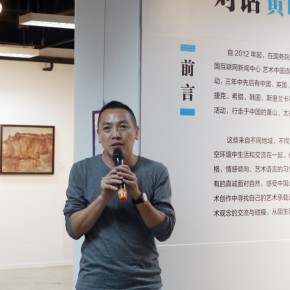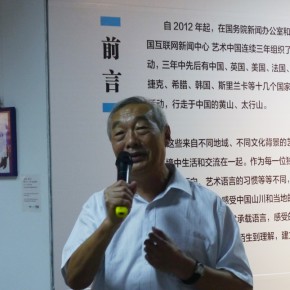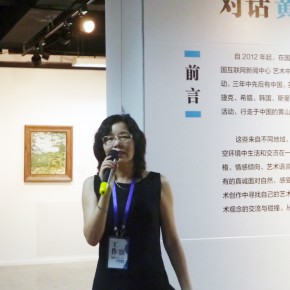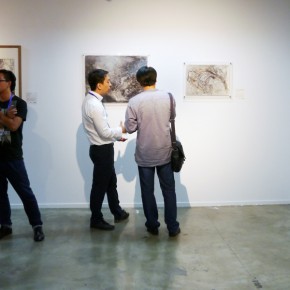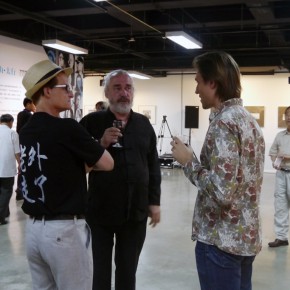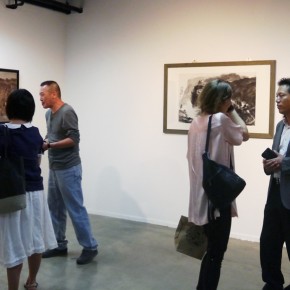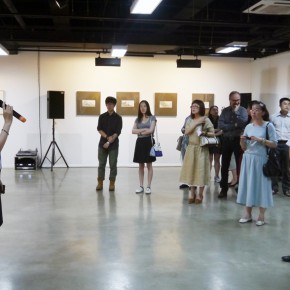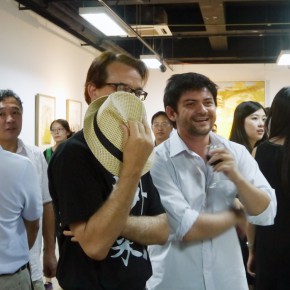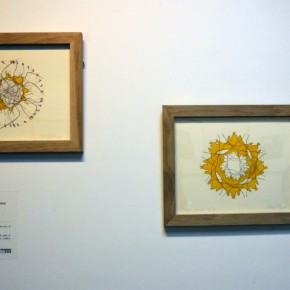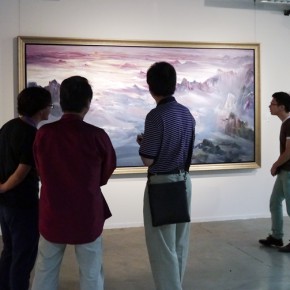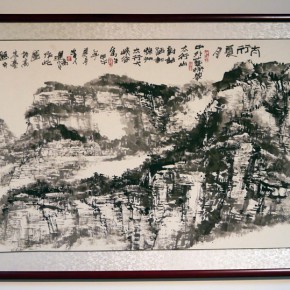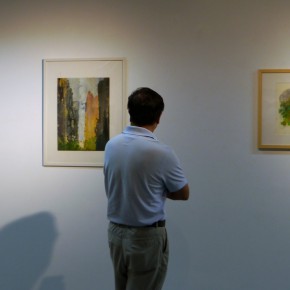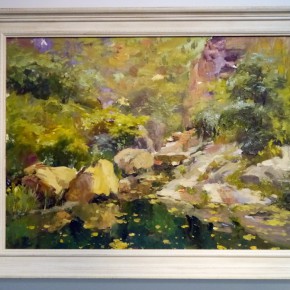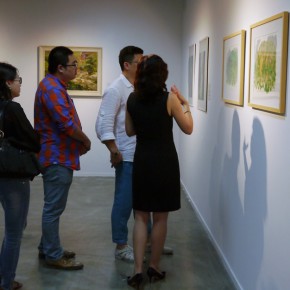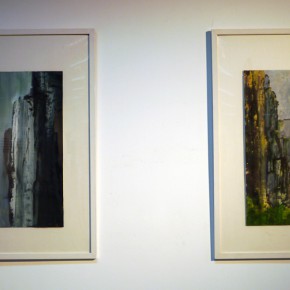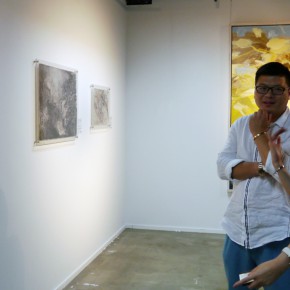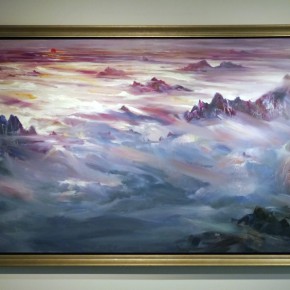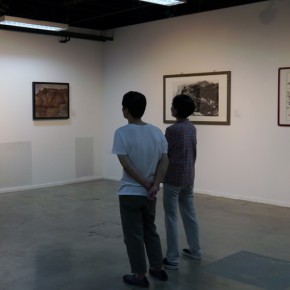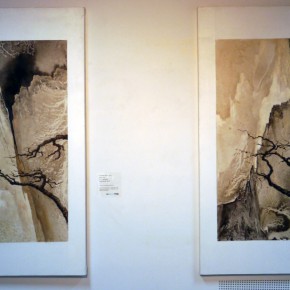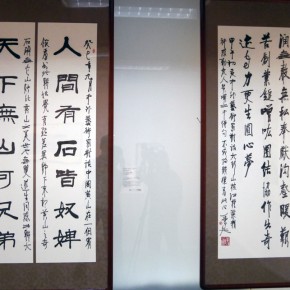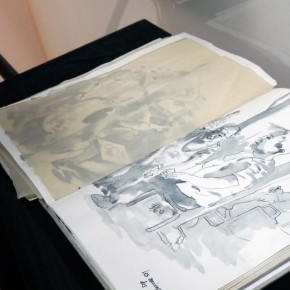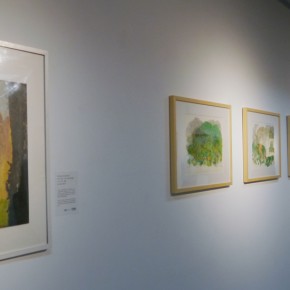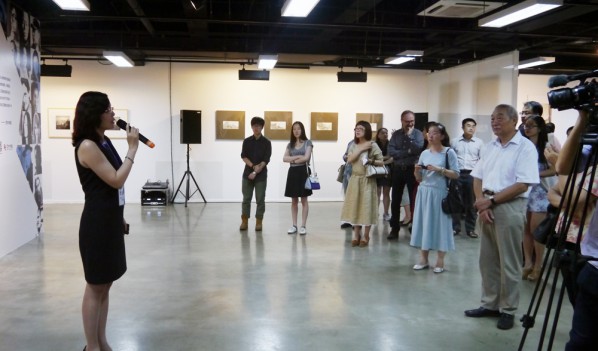
“Dialogue with Huangshan and Taihang Mountains – Chinese and Foreign Artists Communication Exhibition” is held at the Art Museum of the Renmin University of China from September 1 to September 10, 2014, the exhibition is hosted by the China Internet Information Center, organized by the China Internet Information Center art.China.cn and the School of Arts of the Renmin University of China. The exhibition presents the artworks themed on Huangshan(Yellow Mountain) and Taihang Mountains by Chinese and foreign artists using a variety of art languages. At night on September 5, a networking and cocktail party for the exhibiting paintings was held at the exhibition hall of the Art Museum of the Renmin University of China, participating artists of the “Dialogue between the Chinese and Foreign Artists” activity, honored guests and the media attended the cocktail party.
For ancient and modern, Chinese and foreign artists, landscape is an important theme to represent, Chinese people call it Shanshui painting, which starts from the spirituality to depict the mountains and water which are reflected in the painters’ minds, to express the philosophical thought of Chinese literati, the Western call it landscape painting, and western artists follow the rule of perspective to truly create the gorgeous color of the natural landscape. Taihang Mountains and Huangshan in China have always been favorite subjects for Chinese artists to represent, Jing Hao of the Five Dynasties perennially secluded himself in Taihang, and took Taihang as the painting object to create a North Landscape Painting School, which has had a lasting effect. Since the Ming and Qing Dynasties, all Chinese painters have enjoyed drawing the Huangshan Mountains, leaving a large number of beautiful paintings of “Huangshan”.
Guided by the State Council Information Office and the National Tourism Administration since 2012, China Internet Information Center art.China.cn successively organized on three occasions, “Dialogue between the Chinese and Foreign Artists”, more than 60 artists from China, Britain, the United States, France, Germany, Russia, Belgium, the Czech Republic, Greece, South Korea, the Democratic Socialist Republic of Sri Lanka and so on successively took part in the activities in the past three years, travelling through Huangshan Mountain, and Taihang Mountains. These artists have come from different regions, different cultural backgrounds had an opportunity to live and communicate with each other in the same environment of time and space. All independent artists have a different individual personality, emotional tendency, use of artistic language, etc., but they are artists who sincerely face nature and experience the Chinese mountains and rivers, as well as local humanities and amorous feelings. Artists found their own language to carry their art in their own artistic creation, for the communication and collision of artistic conceptions.
Over the three years, a large number of paintings carrying the independent and in-depth thinking of the arts were born, and they reflect new perspectives, new concepts and new thinking after the communication. Chinese artists created ink painting, oil painting and works of installation, while foreign artists’ creation of work cover watercolor, oil painting, video works, etc. Whether the depiction of beautiful Huangshan, or the majestic Taihang Mountains, the medium of art isn’t divided by national boundaries, various forms harmoniously coexist, while artists break the boundaries and transform it into an artistic concept, which is the overall appearance of this exhibition.
In more than 70 works presented by Chinese and foreign artists, we cannot only experience their diverse readings of Chinese natural mountains and rivers, but can also understand that artists from all over the world are concerned about the topic of “man and nature”, after the exhibition in Beijing, it is planned that it will be on display in Paris, to promote the realization of in-depth and continuous dialogue between Chinese and Western cultures.
Text and photo by Zhang Wenzhi, translated by Chen Peihua and edited by Sue/CAFA ART INFO.


